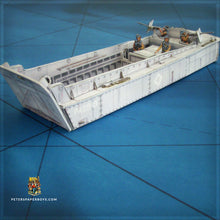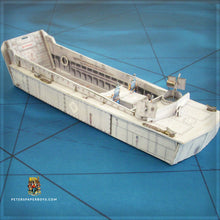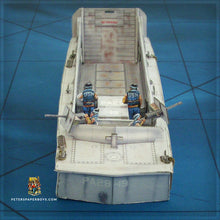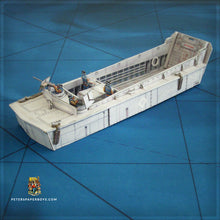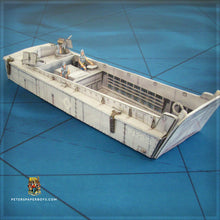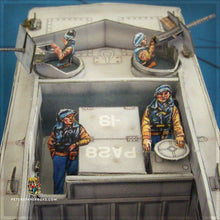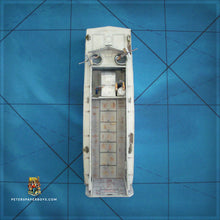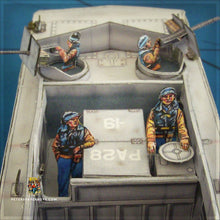
The boat that won World War II
Model by Franco Fusco, Crew by Peter Dennis
From the swamps of Louisiana to the shores of Normandy
The US Marine Corps was looking for more efficient crafts for amphibious operations and one of its young Officers, Victor H. Krulak, who in 37 was an observer in Shanghai, took pictures of a Japanese Daihatsu-class Landing Craft, a steel boat equipped with a loading ramp at the bow, which he thought was the answer to the needs of the Corps.
The idea did not initially attract interest, but later Krulak talked about it with Andrew J. Higgins who built at his own expense a first prototype of a ramp bowed craft, which was followed by three others, also built at his own expense, which were successfully tested in May 1940.
“If Higgins had not designed and built those LCVPs, we never could have landed over an open beach. The whole strategy of the war would have been different.” DWIGHT D. EISENHOWER.
LCVPs were used in Africa, Sicily, continental Italy, Normandy, Provence and the Pacific and were operated by the US Navy, Coast Guard and the Royal Navy.
The LCVP was made of plywood/wood, oak, pine and mahogany. The ramp was made of steel, and three plates of 0.2 in (5 mm) Special Treatment Steel armour plating were bolted either side to the wooden structure.
It could carry 36 fully equipped soldiers, or a jeep and a 12-man squad or 3.6 tons (8000 lb) of cargo. There were fixing bars and strapping hooks to fix vehicles and cargo. It could carry a Jeep and a trailer, a Dodge WC51, a M1 ATG or a 105mm howitzer but even a light armoured vehicle as a Bren Carrier or a truck was too heavy.
This is a waterline, full load, model ready to hit the beach and adjusted to have a workable ramp. The result is not 100% accurate but a playable and, I hope, easy to build model.
The model can be built without hull numbers and separate sheets are provided to customise your model, full parts with hull numbers for boats that hit the beaches of Normandy in June 1944 are included.
US LCVPs were numbered from their mother ship. Three Hull Numbers for each of the following Mother Ships are provided.
- APA-13 - USS Joseph T. Dickman - Utah Beach - 90th division;
- APA-26 - USS Samuel Chase (operated by US Coast Guard) - Omaha Easy red beach - 1st Division;
- APA-28 - USS Charles Carroll - Omaha beach - 29th division;
- APA-33 - USS Bayfield - Utah Beach 4th division.
Notes:
A US Navy and a US Coast Guard crew designed by Peter Dennis are included in the bundle.
The bundle consists of three sheets for the model and crew, two sheet with optional parts with markings for 12 boats to be printed on 100 g/sm (suggested) paper, and 8 sheets for the instructions.
You will need scissors, a craft knife, a metal ruler, glue, 100 g/sm (recommended weight) paper, 1mm card (I recommend finnboard/wood pulp board), cereal box type card and light card. You will also need acrylic paint pens of various colours (sepia, grey, etc…) to touch up the parts.
The sheets are laid down in A4 format. Print your sheets at “fit to page” setting (Adobe Acrobat) onto A4 paper and US legal sized paper, on US letter size will print at 93%.
You can, of course, print the Higgins Boat in any scale you chouse, making it extremely flexible in this respect.
Our Motto is Paper Armies, Proper Armies!
Enjoy








